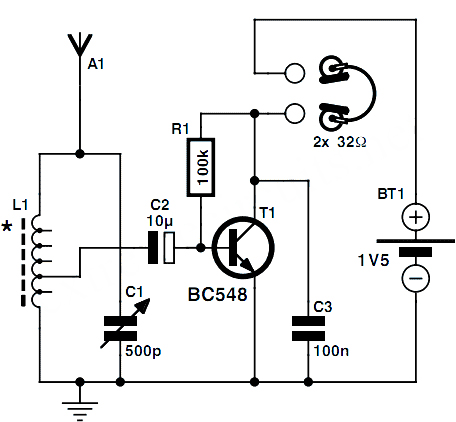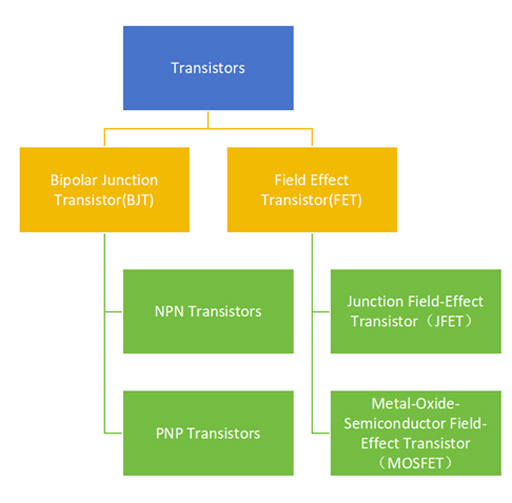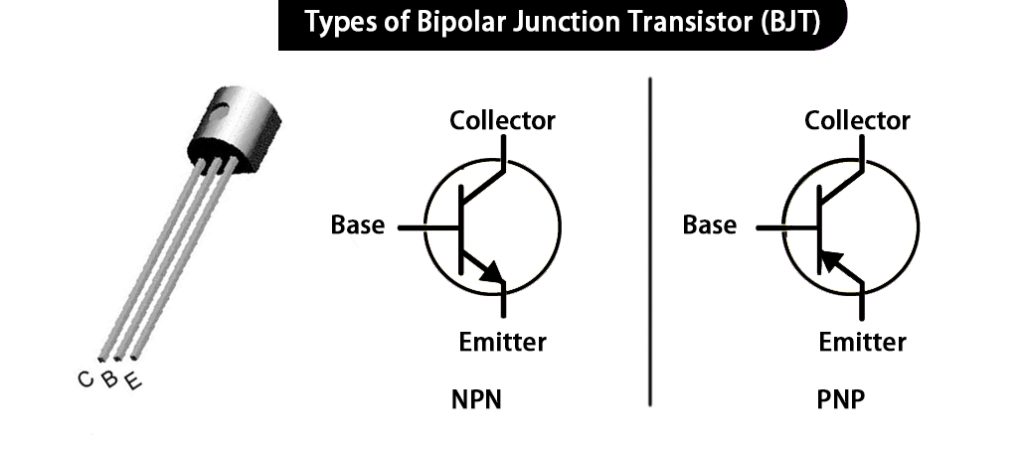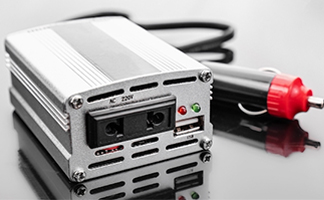What are Transistors? Definition, Parts, How They Work and Uses
Author:admin Date: 2025-04-25 07:42 Views:45
Introduction
Transistors are tiny semiconductor devices important for controlling and regulating the flow of voltage and current in a circuit. So, they can act as a switch or amplifier in a circuit. Transistors remain fundamental in modern electronics. That is why you can find them in every device, ranging from computer chips to smartphones.

It is easy to see why we need transistors already. We will go in-depth about transistors to ensure you have a good understanding of how they work, their applications, the parts, and more.
Parts of a Transistor

When you look at a transistor symbol, you will notice it has three main parts. You have the emitter, base, and collector. These three terminals are vital for the transistor’s performance, whether it is used as an amplifier or a switch.
Emitter
The emitter works as the transistor’s negative terminal. This is where the electronics originate. The emitter is usually heavily doped with a conductive material such as aluminum or copper.
Base
Compared to the emitter, this one is usually lightly doped. It works as the control terminal of a transistor. Its job is to control the flow of electrons from the emitter to the collector.
Collector
This is the positive terminal of the transistor. As the name suggests, it works as the drain for the electrons from the emitter. It is larger than the base and emitter, but it will be moderately doped. This part is made using less conductive material such as silicon.
How Transistors Work

A transistor radio works by controlling the flow of electrons to function as either a switch or an amplifier. This is achieved by applying a small current or voltage to the transistor’s base. It is now able to regulate the flow of a larger current between the emitter and collector terminals. This ability to control current flow is vital for building amplifiers, logic gates, and many types of electronic circuits.
The switching function works when a control signal is applied to the base or gate of the transistor. This makes it work as a switch or electronic gate by allowing or blocking current flow in the circuit.
As for the amplification function, the transistor can also amplify electronic signals when the base controls how much of the current is passed between the base and the emitter. So, depending on the type, you can have a higher current on the output signal.
Types of Transistors

Now that you know more about the transistor definition, we can also look at the types. This helps you understand which type of transistor can work for your application. There are two main types of transistors. They include bipolar junction transistors (BJT) and field-effect transistors (FET).
Bipolar Junction Transistors (BJTs)

These are current controlled devices. Under it, we have the NPN transistor and PNP transistor.
For the case of NPN transistor, it has three semiconductor layers. These are the N-type, P-type, and N-type. Current will flow from the emitter to the collect depending on the base that controls this amount of current.
PNP transistor also comes with three semiconductor layers, but they are reversed compared to the NPN transistor. In this case, you have the P-type, N-type, and P-type semiconductor layers.
Field-Effect Transistors

In this case, you come across voltage-controlled transistors. Examples include JFET, MOSFET, and many others.
Junction Field-Effect Transistor or JFET features a semiconductor junction that controls the current flow in the circuit.
The Metal-Oxide-Semiconductor Field-Effect Transistor (MOSFET) uses a gate voltage to control the amount of current flowing from the emitter to the collector.
You can expect to come across various types of MOSFETs, each with a different application depending on its construction.
Applications of Transistors
Ever since the transistor radio was invented, we have seen so many applications of the transistors. It just goes on to show the flexibility of the transistors. Here are the most common applications of transistors.
- The transistors can act as amplifiers. This is where they can amplify weak signals in audio equipment, radio transmitters, and more devices. The result is a clearer and more powerful output.
- Still, as an amplifier, transistors can also be ideal for signal processing. They will amplify the signal to make more clear and stronger.
- The transistors can also act as switches. This applies to both digital and analog circuits. Their job is to control current and voltage flow. Expect to come across them in electronic devices such as pacemakers to ensure a smooth operation.
- Being electrical gates, you expect them to work well as logic gates. These are the fundamentals of building digital circuits for applications such as computers, consumer electronics, and industrial controls.
- You can also get transistors in microchips to ensure they deliver on powerful and complex computing as well. That is why you will commonly find transistors in hearing aids, radios, and phones.
Advantages of Transistors
- Transistors are smaller compared to vacuum tubes. Their size and portability nature make them ideal for compact and portable electronics.
- Transistors generally consume less power and generate less heat. This is vital for any type of circuit to keep the heat down and use less power. This leads to having longer battery life.
- The transistors are generally more durable and can withstand rough handling.
- Since transistors can be fabricated in vast numbers on a single electronic chip, it allows for the design and building of complex ICs, such as microprocessors.
- Low voltage operation of transistors makes them operate on low-voltage supplies. This can improve safety, reduce costs, and have tighter clearances when designing circuits.
- Designing circuits is further simplified as transistors do not need matching transformers, especially for low-impedance loads.
- Signal amplification and switching make the transistors quite versatile. This allows them to be used in different types of electronics.
Limitations of Transistors
- Transistors can be prone to damage, especially from static electricity. This means you need to handle and ground transistors carefully.
- Sometimes, you can have performance limitations with transistors. For example, transistors might have difficulties operating at very high frequencies. This is because of the junction capacitance and transit time effects.
- Aging and failure are inevitable with transistors. Expect them to degrade over time and fail, but they generally have an impressive lifespan.
How to Test or Check a Transistor

How do you test a germanium transistor? For our case, we will use a multimeter set in diode mode to check if the transistor is in good condition or not. Here are the steps to follow.
- Set the multimeter to be in diode test mode. This is done by rotating the dial to point to the diode symbol.
- Start by testing the base-to-emitter connection. Connect the positive probe to the base and the negative probe to the emitter. In the case of an NPN transistor, there will be a voltage drop of around 0.7V and no reading for a PNP transistor. When you reverse the probes, the results are vice versa.
- Next, test the base-to-collector connection. Attach the positive probe to the base and the negative probe to the collector. The NPN transistor shows a voltage drop of around 0.7, while the PNP transistor is zero since it is an open circuit at this point. When you reverse the probes, expect the results to be vice versa.
- To test the emitter-to-collector connection, attach the positive probe to the emitter and the negative probe to the collector. A good transistor has no reading in both directions since it is an open circuit at this point. If you see readings in either direction, the transistor might be faulty.
Conclusion
Transistors remain vital in modern electronics. Their ability to act as a switch and amplifier makes it easy to find a use for them. It is the reason you can come across them in different electronics today. They are also good at being designed into smaller components, such as microprocessors, making it possible to have complex circuit designs. Make sure you use them as recommended, and you should have some good results.


